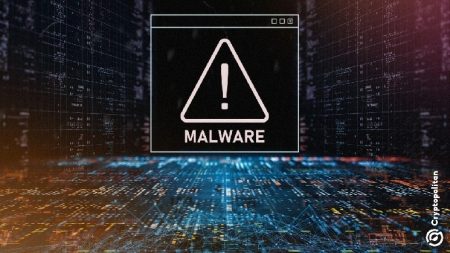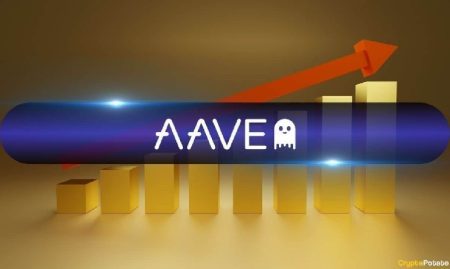Bitcoin Faces Quantum Computing Threat, Solana Co-Founder Warns of Urgent Need for Security Updates
Quantum Computing Could Compromise Bitcoin Security Within Five Years, Experts Debate Timeline and Solutions
In a stark warning that has sent ripples through the cryptocurrency community, Solana co-founder Anatoly Yakovenko has raised significant concerns about Bitcoin’s vulnerability to quantum computing advancements. Speaking at the recent All-In Summit 2025, Yakovenko presented a sobering assessment of Bitcoin’s current cryptographic protections, suggesting they could become obsolete within half a decade if developers don’t take preemptive action to fortify the network against this emerging technological threat.
“There’s a 50/50 chance quantum computers will be powerful enough within five years to break the cryptographic protections securing Bitcoin wallets,” Yakovenko cautioned during his address. His warning highlights a growing concern among some cryptocurrency security experts who have been monitoring quantum computing developments with increasing apprehension. The potential consequences of inaction could be devastating for the world’s premier cryptocurrency, potentially undermining the foundational security that has made Bitcoin a trusted store of value for millions worldwide.
Yakovenko’s proposed solution was direct and unambiguous: “We should migrate Bitcoin to a quantum-resistant signature scheme.” The urgency in his tone reflects the gravity of the situation as he perceives it. The specific vulnerability lies in Bitcoin’s reliance on the Elliptic Curve Digital Signature Algorithm (ECDSA), which could potentially be compromised by quantum computers running Shor’s algorithm. Such a breakthrough would represent an existential threat to the entire Bitcoin ecosystem, potentially allowing malicious actors to forge transactions and compromise wallets containing billions of dollars in assets.
Technical Challenges and Implementation Hurdles for Quantum-Resistant Bitcoin
Implementing quantum-resistant cryptography for Bitcoin presents substantial technical challenges that go beyond simply updating the code. Bitcoin’s decentralized nature and commitment to backward compatibility make significant protocol changes particularly difficult to execute. A migration to post-quantum cryptography would necessitate a hard fork of the Bitcoin blockchain – a process that is not only technically complex but also politically contentious within the Bitcoin community.
Hard forks create entirely new versions of the blockchain that are incompatible with previous versions, requiring widespread consensus among miners, node operators, exchanges, and users. The Bitcoin network has historically been resistant to such fundamental changes, with its community placing immense value on stability and security over rapid innovation. This conservative approach has served Bitcoin well in many respects, helping it maintain its position as the most trusted and valuable cryptocurrency. However, in the face of quantum computing advancements, this same conservative nature could potentially become a liability if it prevents necessary security upgrades.
The technical implementation of quantum-resistant cryptography would likely involve transitioning from the current ECDSA to post-quantum cryptographic algorithms such as lattice-based cryptography, hash-based cryptography, or multivariate polynomial cryptography. Each approach has different security properties, performance characteristics, and implementation challenges. Developers would need to carefully evaluate these options not only for their security against quantum attacks but also for their efficiency, as any significant increase in computational requirements could impact Bitcoin’s usability and accessibility.
Divided Community: Expert Opinions Vary on Quantum Computing Timeline and Threat Assessment
Not all experts share Yakovenko’s sense of urgency regarding the quantum threat to Bitcoin. The cryptocurrency community remains divided on both the timeline for quantum computing advancements and the appropriate response. Adam Back, CEO of Blockstream and a prominent figure in Bitcoin development, has offered a more measured assessment, suggesting that quantum computing capabilities capable of threatening Bitcoin are still relatively distant. Back has also expressed confidence that making Bitcoin quantum-ready is “relatively simple” from a technical perspective, though this view contrasts with the complexity of achieving consensus for such changes.
Bitcoin Core contributor Peter Todd has been even more dismissive of immediate concerns, stating bluntly on social media that quantum computers capable of threatening cryptographic security “don’t exist” and that “the demos running toy problems do not count.” This perspective reflects a common position among Bitcoin maximalists who believe that theoretical quantum threats have been overstated relative to Bitcoin’s immediate challenges. Luke Dashjr, another Bitcoin Core contributor, has prioritized different threats, suggesting that issues like spam transactions and potential corruption among developers pose more immediate risks to Bitcoin than quantum computing.
These divergent perspectives highlight the difficulty in achieving consensus on both the nature of the threat and the appropriate response. While some see quantum computing as a distant concern that can be addressed when the technology matures further, others like Yakovenko see a more imminent threat that requires proactive measures. The debate reflects broader philosophical differences within the cryptocurrency community about how to balance innovation with security and when to implement fundamental protocol changes.
AI Advancements Offer Cautionary Tale for Cryptocurrency Security Planning
Yakovenko draws a compelling parallel between quantum computing and artificial intelligence to illustrate why the Bitcoin community should act sooner rather than later. He points to the rapid advancement of AI technologies, which moved from laboratory experiments to widespread real-world applications faster than many experts predicted. This accelerated timeline for AI deployment suggests that quantum computing could follow a similar trajectory, potentially catching cryptocurrency networks unprepared if they wait too long to implement protective measures.
“The moment tech giants like Apple or Google roll out quantum-safe cryptographic stacks,” Yakovenko warned, “it’s time to migrate.” His statement suggests that by the time major technology companies implement quantum-resistant security in their consumer products, the threat to Bitcoin will be imminent. This perspective emphasizes the importance of monitoring developments not only in quantum computing research but also in commercial applications of quantum-resistant cryptography.
The AI comparison serves as a reminder that technological breakthroughs often follow non-linear patterns of advancement, with periods of seemingly slow progress suddenly giving way to rapid developments. The history of technology is filled with examples of disruptive innovations that appeared further away than they actually were, from the internet to smartphones to recent AI capabilities. If quantum computing follows a similar pattern, the window for implementing protective measures may be narrower than current projections suggest.
Balancing Security with Decentralization: The Path Forward for Bitcoin’s Quantum Resilience
As the debate continues over how and when to address the quantum threat to Bitcoin, the community faces the challenge of balancing enhanced security with Bitcoin’s core principles of decentralization and accessibility. Any solution must not only protect against quantum attacks but also preserve the network’s fundamental properties that have made it valuable in the first place. This delicate balance will require thoughtful technical design, careful implementation planning, and inclusive community governance.
One potential approach involves a phased implementation that gradually introduces quantum-resistant features while maintaining compatibility with existing systems during a transition period. Another possibility is the development of layer-two solutions that add quantum resistance without requiring immediate changes to the base protocol. These approaches could potentially mitigate the risks associated with a hard fork while still providing enhanced security against quantum threats.
Whatever path the Bitcoin community chooses, the conversation sparked by Yakovenko’s warning serves an important purpose in raising awareness about long-term security considerations. While experts may disagree on timelines and priorities, most acknowledge that quantum computing will eventually reach a point where it poses genuine threats to current cryptographic systems. By engaging with these issues now, the cryptocurrency community has an opportunity to develop thoughtful, comprehensive responses that preserve both security and the core values that have made Bitcoin revolutionary. As quantum computing continues to advance, this ongoing dialogue between security experts, developers, and the broader cryptocurrency community will be essential for navigating the challenges that lie ahead.














